Online Seminar
#04 SEMINAR
JT&JTI Intercultural Communication Online Seminar
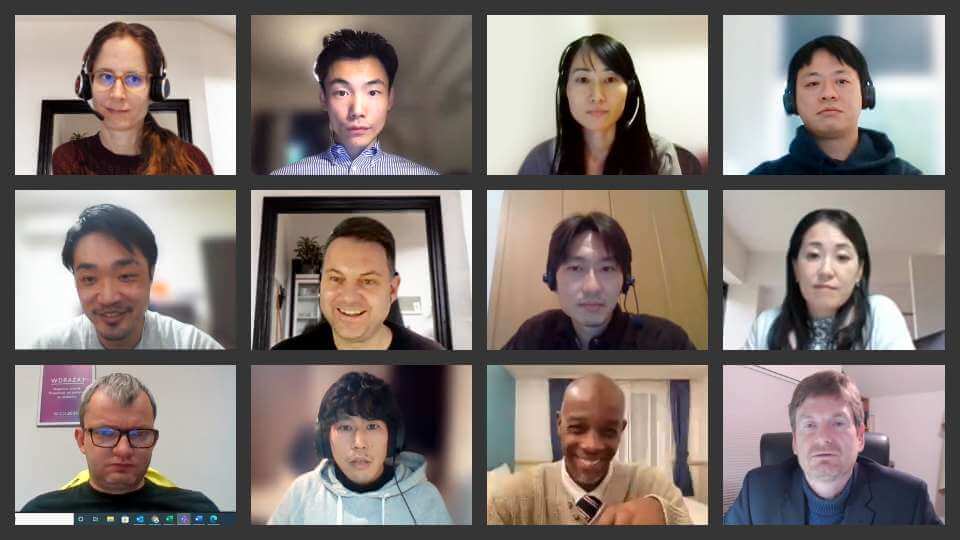
JT and JT International (hereafter JTI) held a joint Intercultural Communication Seminar over three days in November 2021. A total of 12 people, 6 each from JT and JTI, representing various nationalities and duties, gathered to discuss communication, while sharing their own experiences and thoughts with each other. As many of the participants were meeting each other for the first time at this seminar, initially, there was a slight sense of nervous tension in the air. However, as the seminar progressed, the atmosphere gradually relaxed, and the participants were able to share their experiences and thoughts and discuss their ideal styles of communication. The following is a description of the seminar.
Seminar for the Enhancement of One R&D
Since 2019, our R&D functions in Japan and overseas have been unified in one R&D Group, under the slogan of “One R&D”. The R&D Group currently has member of over 40 different nationalities. It is only natural that people who were born and raised in different environments and cultures will have different beliefs and customs. Even with no major, noticeable friction or accidents in daily operations, we may encounter small miscommunications, find another person’s behavior somewhat unreasonable, or be puzzled why another person reacts in the way that they do. We have started to hold Intercultural Communication Seminar in 2020 with the intention of gradually eliminating such gaps in communication and feelings of discomfort. The goal of the seminar is to ascertain what an effective communication style, one that transcends cultural differences, would look like, with the aim of further enhancing One R&D.
What do you consider to be basic underlying assumptions that guide your action, reactions and attitudes? And, do the others have the same of yours?
At the beginning of the workshop, the first point that the facilitator raised concerned “joushiki.”
‘When we think about effective communication, first, let’s focus on your “joushiki”. “jyoshiki” is a neat way to refer to the basic underlying assumptions that guide your actions, reactions, and attitudes. For example, at a meeting to discuss an issue, do you place priority on listening to others or on speaking yourself?’
The workshop participants gave a variety of opinions.
-
- Most of the Japanese participants focus on listening to others’ opinions. The Europeans, on the other hand, tend more toward expressing a lot of their own opinions.
-
- Most likely, people who express their opinions want feedback about those opinions from others. Therefore, I believe that anyone attending a meeting has an obligation to express their opinions.
-
- I think it depends on the expectations of the attendees. Open-minded people would be happy to hear various opinions.
The facilitator continued.
-
- ‘Exactly. A meeting will not go well if its participants are all speakers or all listeners. It is important for participants to take a step toward each other in their actions. Taking steps toward each other is not a matter of compromising but of considering the best way for all attendees to participate without stress. To make this happen, it is important that you first re-examine your own idea of what “joushiki” is (the ways you are accustomed to) and to design rules for the meeting with objectivity.’
MAPs framework for identifying communication style.
What is like your discussion style?
The facilitator introduced a framework called “MAPs” as an effective tool to identify your own “joushiki” and that of others objectively.
Marking your current location (your own “joushiki”) and your goal (the other person’s “joushiki”) on the map will lead to actions that will allow you to take steps toward the other person and the other person to take steps toward you.
Images of MAPs
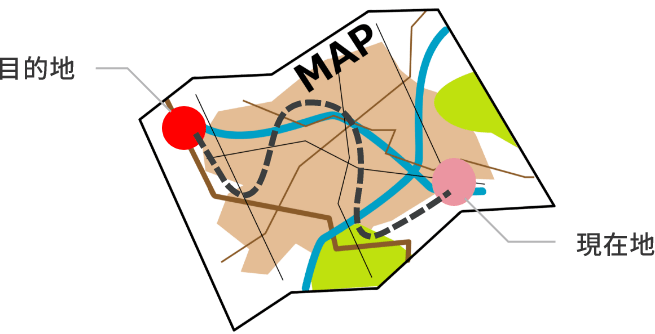

One of these “MAPs” is related to meeting style (discussion style), which can be broadly divided into two types. To use sport as an analogy, the first is rugby style, in which participants compete against each other for the opportunity to speak, as rugby players vie for the ball. Participants are required to be proactive in expressing their opinions. Because this style encourages participants present competing ideas, the discussion proceeds at a quick pace, but on the other hand, there is potential for unfairness, such as certain participants monopolizing the opportunities to speak. The second style is more like golf. In this style, each participant has the opportunity to speak in turn, in much the same way that golfers take turns to hit their ball. The discussion is less likely to stray from the topic, and the harmony of the group can be maintained. This style makes it possible to gather opinions from many people, bringing greater diversity of ideas. However, because there is little opportunity to knock opinions against each other, it is more difficult to arrive at better ideas.
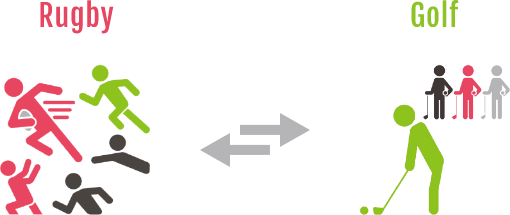
-
- I was more accustomed to the rugby style, but many meetings of Japanese people adopt the golf style, so I have become used to the golf style since I started to work in Japan.
-
- I was born and raised in Japan, so I am more comfortable with the golf style. In Japanese school, most classes are delivered in a lecture format, in which the teacher talks while the students listen, so interrupting others can sometimes be considered rude. In the team I belong to, golf-style meetings are more common. However, I hope to acquire skills that will enable me to take part in the kind of dynamic, fast-paced discussions of the rugby style.
-
- Many meetings in my work environment are rugby style. I myself also try to speak up as much as I can. Having said that, it would be difficult for newcomers to the team to speak up.
Some people are so aggressive that they have no qualms about interrupting when another person is speaking. I find that annoying, to be honest.
Individual participants had different opinions about which style they were used to and which style is more prevalent in their own operations. However, one thing that all participants had in common was that they are all facing some kind of challenge in their current situation, such as sensing the gap between their own ways and those of others or exploring more efficient ways of doing things.The facilitator continued.
-
- There are advantages to both the rugby style and the golf style. What is important is to use both styles in a well-balanced manner and that all participants agree on which style is to be used. For example, if there is a self-introduction session at the beginning of a meeting, the golf style would be suitable. The golf style may also work well for brainstorming. On the other hand, the rugby style is suited to discussions to knock ideas against each other and for decision-making. We recommend that you design your meeting as a hybrid of the rugby and golf styles.
Know your own tendencies and those of your workplace with utilizing MAPs
In addition to MAP1, meeting styles, the participants also learnt about multiple other MAPs.
MAP1Attitude and speaking style in business meeting
In meetings where discussion takes place, do you focus on speaking up and actively seek out opportunities to give an opinion? Or do you emphasize listening to others and wait patiently for an opportunity to speak?

MAP2How important of verbal and detailed explanation
When we communicate in business, do you avoid vague expressions and convey your thoughts in detail with concrete language? Or do you omit information that the other person would already be aware of and communicate with others by exchanging the minimum information required?

MAP3How to identify the scope of responsibility of each business operation
Is the scope of responsibility for the work of individual employees clearly defined with a high degree of transparency, and are outcomes emphasized over process? Or are you working with an awareness of working not only as an individual but as a team, such that the scope of responsibility for the work of individuals can be changed flexibly and, in some cases, that you support other people’s work?
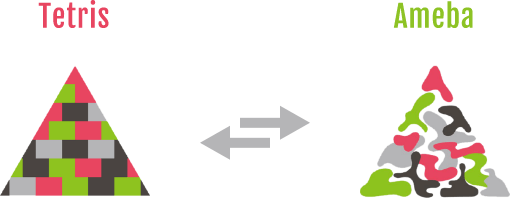
MAP4Degree of formality for smooth communication
Do you show the same attitude and use the same language toward everyone, regardless of their position or title? Or do you express hierarchy by adding honorific titles to others’ names or by considering seating positions?

MAP5Impact on decision-making of power hierarchy within an organization
Are decisions made by higher ranking officers then passed down as instructions to the frontline? Or does top management make decisions based on proposals from frontline employees?
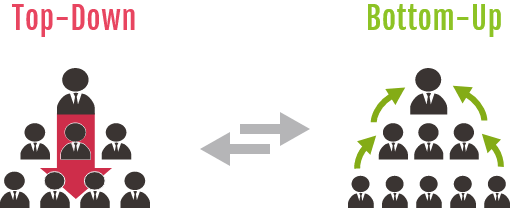
MAP6Awareness of flexibility regarding time and schedules
Do you value time operation and management by starting and ending meetings and work according to a schedule? Or do you value what gets done over being punctual, such as extending meeting times to the best juncture, or working overtime?

After the facilitator’s explanation of the each MAPs, the participants exchanged their opinions about what customs and trends they and their workplace have and whether those customs and trends cause them stress, in the same way they discussed meeting styles. The above descriptions of the MAPs are based on extreme examples. Therefore, most people act on a case-by-case basis, such as adhering to time schedules in some cases, while being more flexible in other cases. They may also help other people with their work if they can, even if it is out of the scope of their own duties. No two individuals have the exact same factors that inform their communication style, such as the environment in which they were born and raised and the style of education they received. For this reason, the balance of their case-by-case approaches will also vary. This discussion was a very lively one, with some people talking about their own experiences and others asking candid questions of people of other nationalities about their experiences.
-
- I don't like being cc-ed (carbon copy) into e-mails. I become perplexed when people share information with me that is not actually intended for me.
-
- Building good working relationships with colleagues is a good thing. However, I think that the notion that you cannot do your work unless you have good personal relationships goes against the notion of professionalism.
-
- I do not know much about Japanese business etiquette. Is it rude if I do not conform to that etiquette?
-
- Japanese people would not really mind, because they know that they have very unique Japanese etiquette. Having said that, Japanese people would certainly be delighted if you were to behave according to that etiquette.
-
- In Japan, hierarchy tends to be expressed explicitly, doesn’t it? If a Japanese boss wanted to create an atmosphere of equality for their subordinates, what kind of actions would they take?
Discussion on ideal communication styles,
using business case
On the third day of the workshop, using a business case as reference, the participants discussed the solutions for specific examples of miscommunication. The cast in this business case are two directors, Hachiro and François, who are of different nationalities and backgrounds. Their teams are working together on a certain project, but communication between the two teams is not going well. They are complaining to each other about how stressful they find the way that the other team proceeds with the work and their comments during meetings.
Business case summary
Hachiro values to gather information meticulously and deliberate it in depth with his team members. Perhaps because he does not want it to sound like an excuse, he prefers not to talk about background information and gives his opinions briefly and succinctly. François, on the other hand, emphasizes the efficient use of time and encourages proactive discussion to reach decisions. He expresses a lot of opinions, sometimes in an emotional manner. Hachiro complains that in Francois’s rush to make decisions, there are often gaps in the information that he gathers. François is frustrated that Hachiro’s team is gathering information on their own, that they are spending so much time on that task, and that they do not even share with François’s team the fact that they are gathering information. François is also dissatisfied with the many changes in personnel in Hachiro’s team, which lead to frequent changes in the staff in charge.
This business case is an original JT Group story created specifically for this seminar. Naturally, the characters and conversations are fictitious, but they are based on interviews with JT and JTI members. Therefore, even though the content is condensed, it does portray the kinds of problems that may actually occur in communication between JT and JTI.
The workshop participants were divided into two groups of six to discuss the respective frustrations and annoyances that Hachiro and François felt. “What do Hachiro and François each consider to be “joushiki”?” “At what point did they get frustrated with each other and behave in ways that caused miscommunications?” “How will they improve their teams for the sake of better communication?”
-
- Hachiro waits for François to finish, but François interrupts Hachiro. François probably believes that he is progressing the meeting with the rugby style, but if that is the case, I think he needs to more considerate. That is because, in the rugby style, the conversation tends to progress at a rapid pace. Some people maybe not be accustomed to communicating in English, so they have to be careful not to speak too fast. In addition, some people may hesitate to cut into others’ conversation regardless of their language proficiency, so they also need to consider the speed of the meeting.
-
- It may be time-consuming for Hachiro’s team, but they should share everything they have done with François’s team. Projects involving members of different nationalities, professional and cultural backgrounds should be started with low context. That is because people who are used to low context cannot keep up with high-context conversations immediately. Even if they can understand it with their heads, they do not have enough skills to read other people’s facial expressions and the atmosphere of the meeting... I think it would be good if the same members first agreed on how to proceed with the project and started to build a working relationship, before gradually moving on to higher-context communication.
-
- Both Hachiro’s and François’s teams should be more conscious of building working relationships. While it is important for individuals to demonstrate their respective expertise at work, building good working relationships with other members that they are working with is also a form of professionalism. Hachiro and François have different cultural backgrounds, and their language skills are also not perfect. I am not saying that Hachiro and François have to become best friends, but they need to be interested enough in each other and get to know each other well enough to understand each other's behavior.
After each group shared the details of its discussions with the other group, the JT & JTI Intercultural Communication Seminar drew to a close.
Let's all keep these MAPs in a corner of your mind and strive for better communication with your peers
The following are some of the opinions and comments expressed by the participants after the seminar.
-
- I was able to gain new knowledge about communication and business etiquette, and I was also able to get to know other members working in JT and JTI well through our exchanges of opinions.
-
- The MAPs approach will enable me to sort out highly abstract matters in a logical manner. Every MAP was novel to me, and I learned a great deal.
I think that the other participants’ opinions have allowed my own imagination to grow. -
- The program was very well structured, and I was able to concentrate and learn over the three days.
I was able to have fun while I learned, which I found very satisfying. I hope to use the communication skills that I have learnt in appropriate ways in my daily work. -
- Cultural gaps are not something that can be filled with meetings and e-mails alone in our daily work.
As we did in the seminar, I believe it is important to have opportunities for these kinds of discussions, even of matters that are not directly related to our work. -
- I was vaguely aware that Japanese people are not very good at the rugby style of meeting.
However, I was surprised to see how they became more and more accustomed to it through the discussions in the seminar. -
- Through this seminar, I found that understanding and bridging gaps between others is easier than I thought.
The facilitator who explained the MAPs framework and led the discussion said that the participants made use of what they had learnt and discovered from the MAPs in the group discussions. Not only did they give their opinions, but they also passed the ball of the conversation to others, saying like‘Mr.XX, what do you think?’ and decide on the rules for progressing the discussions, such as agreeing to go with the rugby style at one point or another. There was also a change in the way they spoke and their attitude. Native and proficient English speakers tend to be more self-centered in the speed and style of their speech. Some of the participants showed this tendency at the beginning of the seminar, but as the seminar progressed, the way in which they spoke changed and they became more considerate of the listener. Not only in the speed at which they spoke, but in the way they looked into the camera so they were meeting the eyes of the person on the other side of the screen, added gestures, and using analogies, they were challenging themselves to find the best way of expressing themselves to “convey their thoughts to the other person,” rather than simply saying what they wanted to say.
Future challenges for the evolution of One R&D
The purpose of this seminar was to enhance One R&D even further. The JT R&D Group will continue to refine the contents of this seminar and to hold similar seminars in the future. We place great value in our people and teamwork, and we want to realize an organization in which each and every member's talents are demonstrated through that teamwork. What participants learned at this seminar will not immediately contribute to the R&D activities, but we believe that it is essential learning from the perspective of organizational development. We ourselves cannot wait to see what kinds of seminars we will be holding going forward and what kind of organization the JT R&D Group will become.
Messages from the facilitators
-
Link Global Solution Inc. Gareth Monteath - I work with a lot of companies, and very few of them put as much thought and effort into working with employees to improve skills as JT Group. To give an example of that, I was recently lucky enough to co-facilitate a workshop series for R&D members in Europe and Japan. The participants were open-minded and energetic. They learned the tools, techniques, and frameworks, and then discussed together how to use them to improve both communication and productive collaboration. When they disagreed, they did so in a constructive way. When they agreed, they talked about specific action items. I felt after each session that I had learned at least as much as the participants!
-
Link Global Solution Inc. Nathan Dewitt - I have worked with JT Group for over 14 years. Whether upskill training of engineers or presentation support for a global tobacco society I’ve seen and supported JT Group in efforts to “globalize” their various teams’ business approach. In this recent workshop as well, my partner and I worked with R&D members from Europe and Japan to raise awareness within their teams, to facilitate smoother cooperation in the future. The members were funny, experienced and showed emotional intelligence in the way they were able to connect with each other and quickly understood the techniques and frameworks presented. I felt these participants could be the beginning of a new “Douki” network that better supports each other in future projects.
Link Global Solution Inc.
Corporate consulting in the fields of human resource development and organizational development, and support services designed to boost global corporate competitiveness and enhance engagement between corporations and individuals
https://www.link-gs.co.jp/







